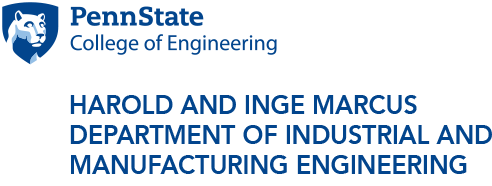IE graduate student, engineering faculty receive ASME best paper award
8/11/2016
UNIVERSITY PARK, Pa. — “Networked, Real Time Translation of 3D Mesh Data to Immersive Virtual Reality Environments,” a paper authored by five Penn State engineers, will receive a best paper award from the American Society of Mechanical Engineers’ (ASME) 36th Computers and Information in Engineering Conference – Virtual Environments and Systems.
Published for the conference, the paper highlights research investigating how the real-time creation of virtual realities is beneficial to everyday situations like education and healthcare.
The paper was authored by researchers Kevin Lesniak, industrial engineering graduate student; Conrad Tucker, assistant professor of engineering design and industrial engineering and affiliate faculty member of computer science and engineering; Chimay Anumba, former head of the Department of Architectural Engineering and professor of architectural engineering; Sven Bilén, head of the School of Engineering Design, Technology, and Professional Programs and professor of engineering design and electrical and aerospace engineering; and Janis Terpenny, Peter and Angela Dal Pezzo Chair and Head of the Harold and Inge Marcus Department of Industrial and Manufacturing Engineering and professor of industrial engineering.
“As the world moves towards more digital modes of communication and knowledge exchange, there is a need to ensure that physical things that surround us in the real world can be shared with the digital world and vice versa,” Tucker said. “Just as digital content can subsequently be experienced in the real world, physical content should be seamlessly communicated and experienced in the digital world.”
These digital replications of real-world environments are created through 3D scans of spaces, which are then used to generate a 3D mesh, or virtual tour of an environment, through the use of RGB-D sensing systems. These systems are low-cost depth cameras that capture RGB images along with per-pixel depth information. Users immerse themselves in the environment created by the RGB-D sensing systems by wear a virtual reality headset, such as the Oculus Rift or HTC Vive, to allows them to see real-time 3D interaction.
Tucker said the ASME International Design Engineering Technical Conferences & Computer and Information in Engineering (IDETC/CIE) Conference is the premier venue for disseminating cutting edge research and teaching methods. It serves as the perfect location to present the engineering researchers’ findings on the real-time translation of 3D mesh data into everyday virtual reality simulations.
Tucker said the broader impacts of this work are applicable to a wide range of domains such as engineering design, online education, or medical training. Some examples include enabling distributed design teams to iteratively create physical prototypes and disseminate them virtually in real time, enabling distance-based students to conduct physical engineering labs using digital technologies or enabling healthcare decision makers to conduct virtual surgery simulations based on systems modeled from the real world.
This research was supported by the National Science Foundation (NSF) and Penn State’s Center for Online Innovation in Learning (COIL).
The ASME IDETC/CIE Conference, the world’s leading design research conference, will be held August 21-24 at the Charlotte Convection Center in Charlotte, North Carolina.




